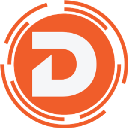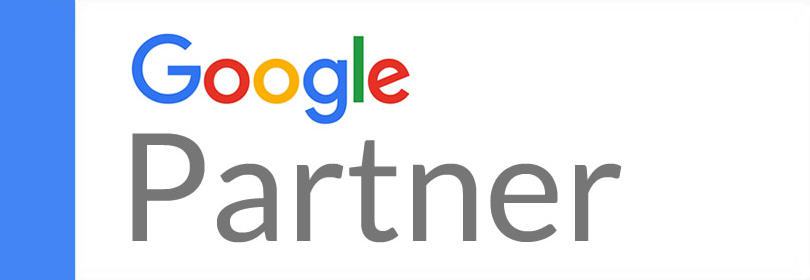How To Find And Know Your Brand's Audience
- By Nate Meadows
- •
- 08 Aug, 2018
- •
A COMPREHENSIVE, NO BULLSHIT APPROACH, TO UNDERSTANDING AND EXECUTING AUDIENCE STRATEGIES THAT WILL CHANGE YOUR MARKETING FOREVER.

Every Brand Has Something In Common...
Regardless of the size of a business that currently uses or wants to utilize social media, everyone has one quest in common… How to find and better understand their audience(s).
The truth is, audiences are not static... they change and your understanding of these changes are critical to a successful social media and broader marketing strategy.
Source: Marketo | 2017 Survey
More and more marketers want to know, concretely, the audience they're reaching and engaging with. Rightfully so. Look, if you're not actively trying to tailor your content to the people who matter most to you then you're wasting your time and effort. This is like trying to drive across country with no map - you'll get there (maybe) but everyone else who had the map will beat you, and with a lot less wasted time, money and energy. A professor once told me:
"The shortest distance to get to your destination is a straight line... the same is true in marketing." (Click to tweet)
There are over 81 million search results for "how to find my social media audience"... Clearly, there's a deep desire and need to understand the "who". I've heard it over and over again, you've been in the industry for 15 years and you know the audience. Maybe... but more than likely you have a strong misconception of what matters most to your audience and where/how they spend their time.
SO... WHERE DO YOU START?
First and foremost, if your brand already has an online presence you're in good shape. Understanding your audience should start by analyzing your web traffic on Google Analytics.
Google Analytics allows you to better understand your existing audience composition in terms of gender, age, and interests. This allows you to understand the kinds of creative content you need to develop, the kinds of media buys you should make, and the kinds of audiences you need to develop for marketing and remarketing campaigns. This happens through Google's Affinity Audiences... Affinity targeting analyzes someone’s overall interests, passions, and lifestyle to get a better sense of their overall identity.
To get started, open Google Analytics and begin with the Demographics Overview report to start with:
- Select Audience > Demographics or Audience > Interests.
- Select the date range preferably to Year-To-Date or at least 6 months worth of data.
You should end up with a report snapshot like this:
This is a high-level view of your audience (male vs. female and age brackets). From here we can drill down into more marketing audience insights.
As you can see, more females (64%) and 25 - 34 year-olds (35%) visit our site more than other demographics. While this is great information, there's still a lot more we can gleam.
Right now we have the "Sessions" key metric selected-- Which is important to see where the strongest stream of traffic is coming from; however, what about the bounce rate? Does that change the data?
- Navigate to Key Metric in the top left of the snapshot:
- Change from "Sessions" > "Bounce Rate".
You should end up with a report snapshot like this:
Now compare and contrast the first report to the new bounce rate report. Our top two audience age ranges from 25 - 44. With a bounce rate in the 50th percentile, not only is this age bracket driving the most sessions, but they are also taking the most actions on the site/consuming content etc.
How do you see what audience is spending the most time on your site? Change the key metric again to see Avg. Session Duration. Your snapshot will change again.
You should end up with a report snapshot like this:
Three different metrics validate that females between 25 -55 are driving the most traffic, taking the most actions and consuming the most content on our site. Great... Let's go even further... These snapshots are only high-level insights. There's even more to drill down into.
Drill down to each of the age brackets to see data for the Other Category dimension. In this example, drilling in to each of the top two age brackets, shows “Arts & Entertainment, Celebrities & Entertainment News” as the top interest for both age brackets (25 -34 & 35 - 44).
Below is an overview of what the Google "Arts & Entertainment" affinity group consist of:
Identifying the demographics of your audience is useful for targeting campaigns and building audiences for remarketing. For an e-commerce site, identifying users with the highest conversion rate or revenue can really hone in your marketing efforts and increase your ROMI.
What's ROMI? ROMI is Return On Marketing Investment and this is how it's calculated:
[($ in additional sales made minus $ invested in the campaign) ÷ $ invested in the campaign] * 100 = ROMI.
You can use this strategy and analysis to find "low-value audiences" that you used to find your high-value audiences: rather than look for high revenue and conversion rates, you simply look for the opposite. This allows you to focus and concentrate your efforts on the audiences that matter most to your brand.
Now we know the age brackets, gender and affinity group(s) that matter most to our brand... But that only gets us so far in terms of understanding our audience. The next step is to understand where these audience segments geographically are concentrated. To do this, follow these steps:
- In the left-side panel, click Audience > Geo
- Then click location
- Make sure your time range (top right) is set to at least 6 months of data. For me, I prefer doing Year-To-Date (YTD) view
You should see a map of the world with shades of blue. Scrolling down past the map you'll see a list of countries that your site has received traffic from. For our brand, we're focused on the US. Click on the country you want to drill down into and now you should get a country traffic density map:
Now, we can see where our traffic from our audience is coming from. While this is insightful, believe it or not, we can go even deeper to understanding where our traffic is coming from and the people that matter most to us.
The table below shows us our top 5 states, and key metrics for us to explore. It's important to see the whole picture. But don't focus on sessions alone, look at bounce rate, and session duration as well. As you can see, three of the five states have higher bounce rates and lower session durations than what we would like (California, Michigan and Florida). However, the states that standout are Ohio and Arizona. Coincidentally, this is also where we have locations for our business.
What's a good bounce rate? Depends on industry and a number of variables, however, GoRocketFuel's research states "Most websites will see bounce rates fall somewhere between 26% and 70%.".
If we change the primary dimension from "region" to "city" we get an even more granular view:
Now we have a pretty good view of things... As an example, if one of our strategic goals was to expand the California market, we know the makeup of the audience and can hyper focus our collective go to market approach to be extremely relevant and effective.
Using California as an example, we can use additional tools to further explore and understand our audience in that region. For instance, if we wanted to tap specifically into Los Angeles, we can deep dive into the psychographics and community tapestry. This is an additional layer Digital Radar uses to increase our effective reach and relevance.
Ok, now you have some audience insights... you want to get started. The best place to test your content-- social media.
I see it all the time... a lot of B2B clients, want to organically reach a specific group of job titles on their social media channels - everyone else is a "waste" and "doesn't add value"... Or, they believe/have misconceptions as to who is on what platform... "bio chemists aren't on Facebook, so let's pass that channel and only utilize LinkedIn". This is a huge mistake, for many reasons.
According a Pew Research Center report, "Facebook remains the primary platform for most Americans. Roughly two-thirds of U.S. adults (68%) now report that they are Facebook users, and roughly three-quarters of those users access Facebook on a daily basis. With the exception of those 65 and older, a majority of Americans across a wide range of demographic groups now use Facebook."
Which leads me to the two biggest mistakes anyone can make in trying to find and reach their target social media audience.
1) Assume.
Believe it or not, most companies do not have recent, data-driven research to understand their audience. Most companies are going through the motions, day after day, organically trying to reach their audience based upon what they knew to be true... this is like posting your content on a littered community board at your local coffee shop. You cannot control how many people see it or who sees it, and when they see your content. It's a gamble and the odds are not forever in your future.
More than ever before, marketers and brands must be hyper-strategic about their content and how it will resonate with their audiences. This is only possible with intense, data backed persona research.
Confused Where To Get Started?
+1-937-701-0187hello@digitalradar.agencyOhioArizona
All Rights Reserved | Digital Radar Marketing LLC.



